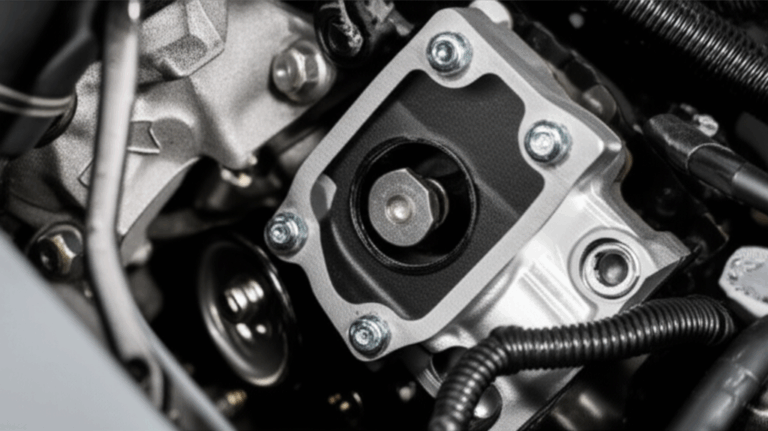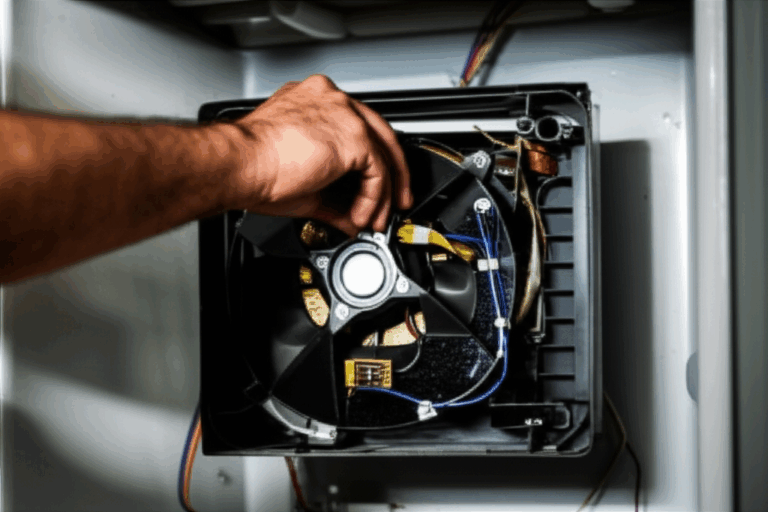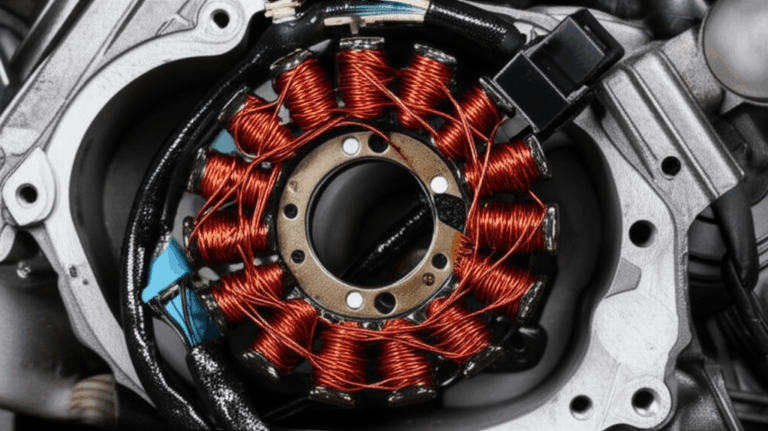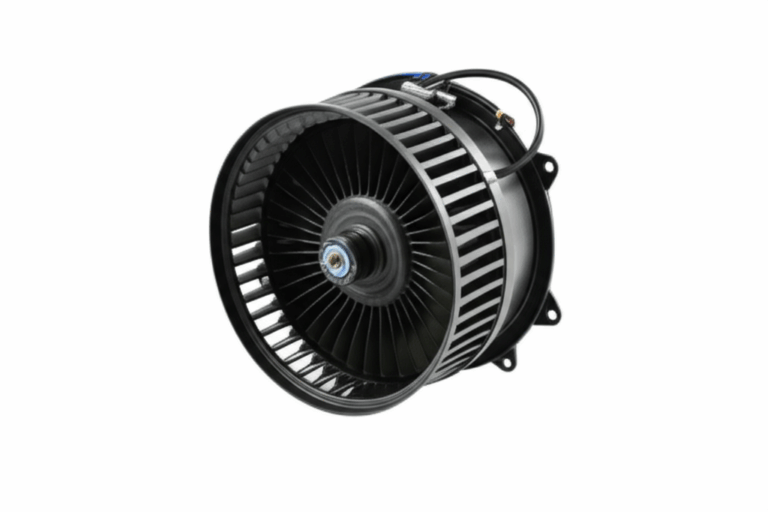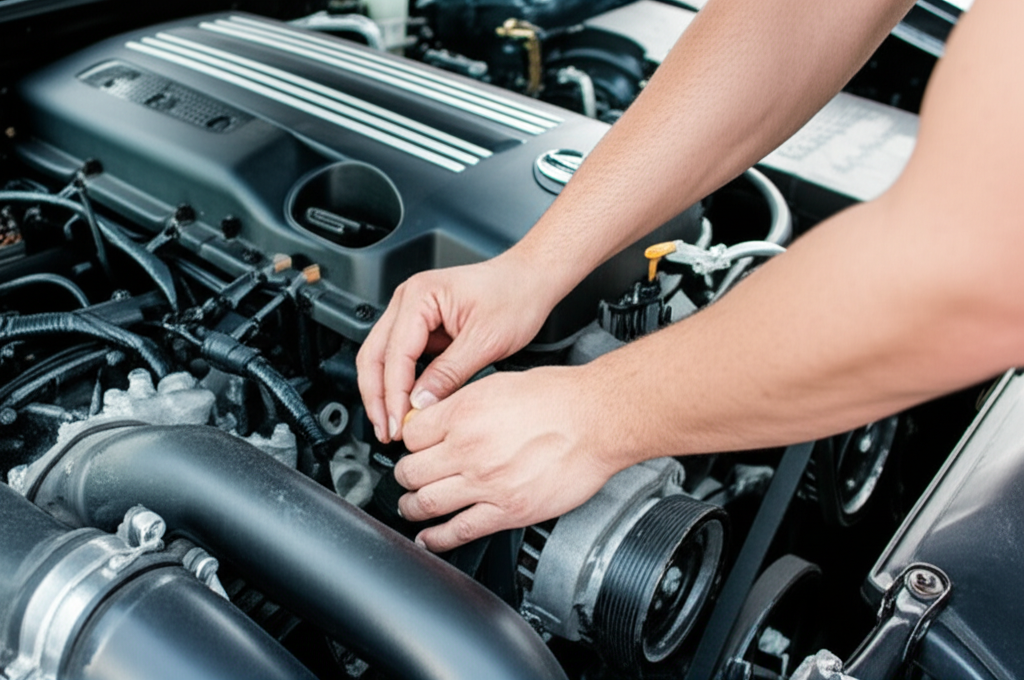
Motor Core Laminations Made Simple: How to Choose Materials and Processes That Boost Efficiency, Cut Losses, and Scale Production
Every design engineer faces the same tough trade‑off. You need higher motor efficiency, tighter NVH, and lower heat under real loads. You also need manufacturability that scales without beating up your budget. If you have asked questions like “Does lamination thickness really improve efficiency?” or “Should I stamp or laser cut for this BLDC stator?” you are in the right place.
This guide follows a simple framework: Problem → Explain → Guide → Empower. I will spell out the physics in plain language, show your options without spin, and give you a clear path to a better lamination decision whether you design, source, or build.
In practical terms, lamination choices affect torque density, thermal behavior, drivetrain noise and vibration, and the long‑term stability of your powertrain. They also decide how easy your supplier can hold tolerances as volume ramps. So let’s get you a clean view of what matters and why.
In This Article
- Why Lamination Choice Matters
- The Fundamentals: Eddy Currents, Hysteresis, and NVH
- Material Options for Laminations
- Manufacturing and Assembly Processes
- Tolerances, Inspection, and Quality Assurance
- Matching Solutions to Applications
- Cost, Supply, and Procurement Considerations
- Engineering Takeaways and Next Steps
Why Lamination Choice Matters
You use laminations to reduce core losses in alternating magnetic fields. Instead of one solid iron core that turns magnetic flux into heat through eddy currents, you stack many thin sheets insulated from each other. Each sheet interrupts those circulating currents. That lowers heat and improves efficiency.
Why should you care today? Three reasons stand out.
- Power density keeps climbing. Better laminations help motors deliver more torque per kilogram while staying cool.
- Inverter switching speeds rise. Higher electrical frequencies and harmonics demand thinner sheets and better insulation.
- NVH expectations keep tightening. Core geometry, material, and stack integrity influence vibration at idle and across RPM bands, which matters in EV powertrains, robotics, and industrial drives.
Good lamination choices raise performance and simplify thermal management. They also reduce copper usage for a given target efficiency. That is real cost back in your pocket.
The Fundamentals: Eddy Currents, Hysteresis, and NVH
Let’s unpack the main physics in plain terms. No hand waving.
Eddy currents: the unwanted whirlpools
Imagine a river full of tight whirlpools. Those are eddy currents in a motor core. A changing magnetic field induces localized current loops in conductive material. Those loops waste energy as heat. Thinner sheets with electrical insulation break the current path. The “whirlpools” get smaller. The heat drops.
- Eddy current loss scales with the square of lamination thickness and the square of frequency for a given flux swing. Halve the thickness and you can quarter that loss at the same frequency band.
- Conductivity matters too. Silicon content in steel reduces conductivity which helps.
Hysteresis loss: dragging the magnetization back and forth
When the magnetic field reverses in a core, the magnetic domains lag and resist change. That lag wastes energy. The B‑H curve tells you what happens. Narrower loops mean lower hysteresis loss. Materials with lower coercivity lose less energy each cycle.
- Hysteresis loss scales roughly with frequency and the area of the B‑H loop.
- Alloy design and heat treatment tune this behavior.
Thickness and insulation: the twin levers
You can reduce eddy loss with thinner laminations and better interlaminar insulation. You still need to balance that against cost, stamping burrs, and stacking factor.
- Thinner sheets reduce eddy loss at higher frequency.
- Insulation class and coating uniformity reduce sheet‑to‑sheet shorting.
- Stacking factor (net iron fraction of the stack) drops with thicker coatings and rough surfaces which slightly reduces magnetic cross section.
Frequency content and your waveform
Modern inverters push fundamental frequencies up and add high‑frequency switching harmonics. Even in a motor that runs at 200 Hz fundamental, you can see significant flux at several kHz from PWM edges. Thin laminations, low conductivity, and good coatings help soak that up. You also want geometry that manages local peak flux and spreads it.
NVH: where electromagnetics and mechanics meet
Noise, vibration, and harshness come from several sources in a machine. Laminations matter because:
- Magnetostriction in the core changes dimensions slightly as flux changes which can cause audible buzz or whine near slot harmonics and switching frequencies.
- Core stiffness and slot/tooth geometry set how the stator and housing vibrate under electromagnetic forcing.
- Stack bonding, interlocking, and burr control affect how the core transmits energy into the frame which shows up as vibration in the chassis or mounting structure.
Think of permeability like a sponge for magnetic flux. High permeability lets flux flow easily which boosts inductance and reduces magnetizing current. That helps efficiency and lowers heat which cuts vibration caused by thermal gradients. The wrong stack can act like a drum skin. The right one damps it.
Material Options for Laminations
You have a menu of materials from low‑carbon steels to high cobalt alloys. The right pick depends on your frequency, flux density, thermal limits, and cost target.
Before we dive in, if you want a broad primer on the family of materials, this overview of electrical steel laminations lays a solid foundation.
Non‑oriented silicon steel (NGO)
- What it is: Steel with 2% to 3.5% silicon. Grain structure is uniform in all directions. Supplied fully processed with a final anneal.
- Where it shines: Rotating machinery like induction motors, BLDC/PMSM, and generators where flux rotates in the plane.
- Pros:
- Balanced performance in any direction.
- Good cost to performance ratio.
- Wide availability in many thicknesses from ~0.65 mm down to ~0.20 mm and below for high frequency designs.
- Cons:
- Not as low loss as grain oriented steels in the rolling direction.
- Losses rise at very high frequency unless you step down thickness.
You will see vendors designate M grades or proprietary grades that correlate with flux density and core loss at specified test points.
Grain oriented silicon steel (GO)
- What it is: Steel processed to align the grain structure which gives very low loss and high permeability in the rolling direction.
- Where it shines: Transformers where flux aligns with the grain.
- Pros:
- Very low core loss in the grain direction.
- Cons:
- Poor off‑axis performance which makes it a mismatch for rotating machines where flux rotates.
You can use GO in specialty rotating designs with segmented flux paths. Most traction and industrial motors still prefer NGO.
High‑silicon and thin‑gauge grades
- What it is: NGO with higher silicon and thinner gauges like 0.10 mm to 0.18 mm.
- Where it shines: High frequency stators in small motors, high speed machines, and aerospace where you push several hundred Hz or more.
- Pros:
- Low eddy loss at elevated frequency.
- Cons:
- Higher material cost and tighter processing windows.
- Stamping burr control is harder which pushes you toward laser or fine blanking at low to medium volume.
Cobalt iron alloys (CoFe)
- What it is: Alloys with 49% cobalt and iron plus minor additions. Very high saturation flux density and good high frequency performance when thin.
- Where it shines: Aerospace, turbo machinery, and very high power density motors where you need high Bsat and low loss.
- Pros:
- Higher Bsat lets you reduce cross section which cuts weight.
- Good permeability at high flux and frequency.
- Cons:
- High cost.
- More challenging to cut and process which affects tooling and scrap rates.
Soft magnetic composites (SMC)
- What it is: Pressed iron powder with an insulating binder creates 3D isotropic magnetic parts.
- Where it shines: Complex 3D flux paths, integrated stator designs, and compact actuators.
- Pros:
- 3D magnetic flow with low eddy currents because each particle is insulated.
- Simplifies manufacturing of complex shapes.
- Cons:
- Lower permeability than electrical steel.
- Lower saturation and mechanical strength at temperature.
Practical material selection tips
- If your fundamental electrical frequency is below 400 Hz and the inverter switching spectrum is well filtered, standard NGO at 0.35 mm or 0.50 mm can hit your targets at lower cost.
- If you push high speeds or see significant harmonic content near several kHz, you will want 0.20 mm or thinner sheets with coating that holds up to your lamination bonding or interlocking process.
- If you need maximum torque density at any cost, consider CoFe for the stator or rotor where it yields the biggest benefit. Run the math because coil copper and cooling might drop enough to offset the alloy cost.
You can read more on the role of silicon in electrical steels and how it affects conductivity and losses in this overview of silicon steel laminations.
Manufacturing and Assembly Processes
Material only gets you halfway. How you cut, stack, and join laminations can make or break your design. The right process depends on volume, geometry, tolerances, and NVH needs.
For a complete view of how these steps come together in practice, this page on motor core laminations shows typical stator and rotor builds at a glance.
Cutting: stamping vs laser vs EDM
- Progressive stamping
- Best for: High volume with stable geometries.
- Strengths:
- Low cost per part at scale.
- Tight repeatability and throughput.
- Watch outs:
- Burr formation rises as tooling wears. Burr height and rollover can create interlam shorts or reduce stacking factor.
- Tooling cost and lead time are high. Changes are expensive.
- Laser cutting
- Best for: Prototyping and low to medium volume. Complex slots, skewed teeth, or frequent design changes.
- Strengths:
- No hard tooling. Quick iteration.
- Burr control is better with proper parameters.
- Watch outs:
- Heat affected zones can alter local magnetic properties if you run too hot or skip proper post processing.
- Slower than stamping for high volume.
- Wire EDM or fine blanking
- Best for: Very tight tolerances or burr free edges in critical features.
- Strengths:
- Superb edge quality and precision.
- Watch outs:
- Higher per‑part cost. Volume limits apply.
Decide early which features drive your process. A skewed rotor slot can nudge you toward laser for development then a split‑stack stamped approach for production.
Insulation coatings and stacking factor
Each lamination carries a thin inorganic or organic coating. Its job is to keep sheets electrically isolated to block eddy currents across the stack.
- Coating class defines insulation resistance, heat rating, and chemical resistance.
- Too thick and you lose stacking factor which reduces net iron. Too thin and you raise interlam shorts.
- Measure stacking factor on production stacks and track over time. A small slip in coating can shift your core loss and inductance.
Stack assembly: interlocking, bonding, welding
- Interlocking
- Sheets have lances or tabs that snap together like LEGO bricks. You can build rigid cores without heat.
- Low thermal impact means you preserve magnetic properties.
- Rework is easier than welded stacks.
- Bonding (adhesive or resin impregnation)
- You apply adhesive between sheets or impregnate after stacking. You get a solid, low noise core that damps vibration.
- Heat cycles must respect coating limits. Adhesive must survive your winding and potting process.
- TIG welding, laser welding, or staking
- You place spot welds or stakes around the OD or end face.
- Fast and robust for rotors. Watch the heat input which can degrade the local steel.
- Limit welds in high flux regions and keep them shallow.
Pick the method that fits your NVH target and process flow. Bonded stacks tend to run quieter. Interlocked stacks offer solid cost and performance for many industrial motors. Weld carefully if you must.
Annealing and stress relief
Cutting and forming induce stress that hurts magnetic performance. A proper anneal restores grain boundaries and reduces loss.
- Fully processed NGO arrives with a final anneal. Heat from cutting can still introduce local stress.
- Some parts benefit from a low temperature stress relief after laser cutting or heavy forming.
- Work with your materials team. Do not exceed coating temperature limits or you will kill insulation.
Rotor and stator specifics
- Stators
- Tooth geometry, slot openings, and back iron thickness set inductance and torque ripple.
- Skewed slots reduce cogging and tonal noise which improves NVH in the chassis and steering wheel feel in traction systems.
- Bonded or welded stacks improve rigidity which reduces whine near specific RPMs.
- Learn more about how the stack layout influences performance in this overview of stator core lamination.
- Rotors
- Skew and bar geometry in induction rotors help smooth torque and cut drivetrain noise.
- Permanent magnet rotors must manage leakage paths and retainment features without creating hot spots for eddy currents.
- End ring design and bar conductivity control rotor heating.
- For more depth on rotor design trade‑offs and lamination construction see rotor core lamination.
Skew, segmentation, and assembly tricks
- Axial skew splits slot harmonics which reduces audible tones. You can implement skew with segmented stacks offset by a small angle.
- Radial segmentation helps manage differential thermal expansion and simplifies tooling.
- Split stators (two or more arcs) reduce winding complexity at the cost of added assembly steps.
Tolerances, Inspection, and Quality Assurance
Your motor depends on repeatable laminations. Build quality into the process and verify it with the right tests.
Dimensional tolerances
- Control OD, ID, slot width, and tooth tip geometry. These drive air gap, slot fill, and torque ripple.
- Keep burr height below the insulation thickness so you do not short layers. Track burrs per tool cavity if you stamp.
- Specify flatness and stack parallelism. Poor flatness raises noise and uneven air gaps.
General tolerances like ISO 2768 do not always fit lamination needs. Define critical features with explicit GD&T.
Magnetic property verification
- Material certs should include core loss and permeability at your target flux density and frequency. ASTM A677 covers many NGO grades and their property windows.
- Lab verification often uses Epstein frame per IEC 60404‑2 or single sheet tester per IEC 60404‑3.
- If you laser cut, test a few laser coupons to check for heat affected property shifts.
Insulation and stacking checks
- Measure interlaminar resistance across the stack at several locations. Look for consistency.
- Track stacking factor with go/no‑go gauges or precise thickness measurements of stacks vs theoretical sheet count.
Process control and traceability
- At volume, insist on process capability studies (Cp/Cpk) for key dimensions.
- Ask for lot traceability back to the mill heat number. You want to tie performance shifts to material lots when you troubleshoot.
- PPAP or an equivalent production part approval process helps align expectations across engineering, quality, and procurement.
NVH checks in context
Even though core laminations are not the whole NVH story, they drive it. Include:
- No‑load spin tests and FFT analysis to spot tonal content from slot harmonics.
- Torque ripple measurement under controlled DC bus conditions to correlate with lamination geometry and assembly.
- Thermal runup tests to see how expansion shifts air gap and bearing load which can add vibration under certain RPM bands.
Matching Solutions to Applications
This is where honest trade‑offs help. You will not find one process or alloy that wins everywhere. Pick the best fit for your envelope, duty cycle, and cost.
BLDC and PMSM for traction and robotics
- What matters most:
- High efficiency across a broad speed range.
- Smooth torque with low ripple to keep drivetrain noise down.
- Thermal headroom under peak current.
- Recommendations:
- NGO in 0.20 mm to 0.35 mm thickness depending on switching spectrum.
- Skewed slots or fractional slot windings to cut cogging and tonal noise.
- Bonded stator stacks for better damping if your NVH targets are tight.
- Precision rotor lamination stacks with careful magnet pockets to minimize leakage and local eddy heating.
- When to upgrade:
- If you chase extreme power density, test CoFe in the stator teeth first. You often get the best return there.
For design teams focused on compact, high‑speed brushless motors, this primer on the BLDC stator core shows common slot forms and stack strategies that scale from prototype to production.
Industrial induction motors
- What matters most:
- Robustness, cost, and efficiency under steady loads.
- Service life and repeatability.
- Recommendations:
- NGO at 0.35 mm or 0.50 mm with well controlled stamping and burr limits.
- Rotor skew and bar geometry tuned for the load profile.
- Interlocked stacks balance cost and performance.
- When to upgrade:
- If you need IE4 or IE5 efficiency classes, evaluate thinner gauges and better coatings plus bonded stators.
Aerospace and high‑speed spindles
- What matters most:
- Power density and thermal management.
- Tight NVH and minimal growth at temperature.
- Recommendations:
- Thin NGO for stators and CoFe where flux density peaks.
- Laser cutting with post‑cut stress relief to protect properties.
- Precision bonding with high temperature adhesives.
Small appliances and pumps
- What matters most:
- Cost and volume scalability.
- Adequate efficiency to meet regulatory targets.
- Recommendations:
- Stamped NGO at 0.50 mm with proven tooling.
- Interlocking or light staking where bonding adds little value.
Transformers and static magnetic devices
- What matters most:
- Directional magnetic performance and low core loss at 50/60 Hz.
- Recommendations:
- Grain oriented silicon steel in EI or UI forms. Tight stacking and miter cuts for step‑lap joints to minimize loss.
- Note:
- Rotating machine rules do not apply. Use a transformer‑specific approach.
If you work on transformers, this short overview of EI core design and variants like UI will help you align core style with winding methods and space limits.
Cost, Supply, and Procurement Considerations
Engineering and procurement sit on the same side of the table. You both want performance without surprises. Here is how to keep risk low and value high.
Total cost of ownership beats unit price
- Material grade choice affects copper mass, cooling needs, and inverter losses. Run system models that include those shifts.
- Scrap rate differs by process. Laser can lower scrap on complex parts at low volume while stamping wins at scale.
- Tooling amortization matters. If the design will change after field testing, consider laser through PPAP to avoid sunk tooling.
Supplier capability and audits
- Ask for evidence of annealing control if they heat treat. Look for documented furnace profiles and lot logs.
- Review burr measurement methods and limits. Burrs kill stacking factor and insulation.
- Check coating application and cure methods. Inconsistent coatings show up later as hot cores and unexpected vibration.
Certifications and standards
- Material conformance: ASTM A677 for NGO electrical steel grades is a common baseline.
- Magnetic property testing: IEC 60404‑2 (Epstein frame), IEC 60404‑3 (Single sheet tester).
- Dimensional and process control: PPAP elements and ISO 9001 quality systems.
Lead times and second sources
- Book mill slots early for specialty thin gauges or CoFe. Lead times can swing with global demand.
- Qualify a second source before you need it. Ask both to cut test coupons for magnetic verification so you can compare losses apples to apples.
Packaging and logistics
- Avoid edge dings and moisture which can wreck insulation. Specify VCI packaging and desiccants as needed.
- Stack height limits matter. Very tall stacks can deform in transit which changes flatness.
The Guide in Practice: A Decision Map
Here is a simple way to decide on thickness and process without analysis paralysis.
1) Define your electrical frequency content.
- Fundamental electrical frequency under max speed.
- Dominant PWM frequency and significant harmonics.
2) Set your flux density target.
- Use your torque and stator geometry to estimate B in the teeth and back iron.
- Identify hot spots where B will peak.
3) Pick a starting material and thickness.
- Below 400 Hz with moderate harmonics: NGO at 0.35 mm is a solid baseline.
- Above 400 Hz or with lots of high‑frequency content: step down to 0.20 mm or thinner.
4) Choose a cut method for your phase.
- Prototype: laser or EDM.
- Pilot: laser with tighter controls or small stamping tools if geometry stabilizes.
- Production: progressive stamping with a burr and coating control plan.
5) Select a stacking method to hit NVH and rigidity goals.
- Need damping: bonded.
- Need low cost at volume: interlocked.
- Rotor strength first: welded carefully away from high flux paths.
6) Lock in inspection and acceptance criteria.
- Dimensional and burr limits.
- Stacking factor and interlam resistance.
- Magnetic properties at your working points.
7) Run a loop.
- Build a sample stack. Measure no‑load losses, temperature rise, and tonal content. Adjust material or thickness if needed.
If you want a quick refresher on how stators and rotors differ in design priorities and how stacks come together, the pages on stator core lamination and rotor core lamination are a helpful checkpoint.
Common Pitfalls to Avoid
- Over‑specifying thickness without a frequency model. You may pay for 0.20 mm when 0.35 mm hits the same efficiency with better stacking factor.
- Ignoring burr growth over tooling life. Set real burr limits and measure them so you do not drift into interlam shorts later.
- Welding across high flux regions. You raise local loss which turns into heat and noise.
- Skipping stress relief after aggressive laser cutting. You might see higher hysteresis loss than expected.
- Treating NVH as an afterthought. Slot harmonics and magnetostriction love to show up in customer feedback as tonal whine at specific RPMs.
Engineering FAQs
- How does lamination thickness affect efficiency?
- Eddy current loss drops roughly with the square of thickness. Thinner sheets pay off at higher frequency. Balance that against stacking factor and cost.
- Will laser cutting hurt magnetic properties?
- Not if you control heat input and use post‑cut stress relief where needed. Test coupons confirm it.
- Is bonding worth it for NVH?
- Often yes. Bonded stacks can damp structure‑borne noise. If your product lives near customers, it is worth the test.
- When does CoFe make sense?
- When high Bsat unlocks a smaller, lighter core and reduces copper and cooling enough to offset alloy cost.
Your Engineering Takeaway
- Lamination thickness, insulation, and material grade set your efficiency and heat at frequency. Model your spectrum before you pick.
- Manufacturing choices are not an afterthought. Cutting method, burr control, and stacking strategy change both losses and NVH.
- Verify magnetic properties at your working points. Do not rely on catalog data alone.
- Treat NVH as a design target. Slotting, skew, and bonding can prevent tonal issues that drive warranty and customer complaints.
- Procurement can lower total cost by funding the right material and process choices up front. You will spend less on copper, cooling, and late fixes.
If you want a single bookmark that ties these threads together, keep this overview of motor core laminations handy. It connects material, process, and application in one place.
Next Steps: Empower Your Decision
- Define your target electrical frequency content and flux density. Run a quick loss estimate for two candidate thicknesses.
- Pick a prototype path. Laser cut a short stack and measure core loss, temperature rise, and tonal content under inverter excitation.
- Engage suppliers with a short spec package.
- Material grade with thickness and coating class.
- Cut method and burr limits.
- Stacking method and acceptance tests.
- Magnetic property targets and verification method.
- Align on PPAP and quality gates before you cut tools. Get buy‑in from engineering, quality, and sourcing.
- If you need a sounding board, schedule a technical review with an experienced lamination partner. Bring your duty cycle, envelope, and targets. You will walk out with a sharper spec and a faster path to a quiet, efficient core.
References and standards you can cite in your internal documentation:
- ASTM A677: Standard specification for nonoriented electrical steel.
- IEC 60404‑2: Methods for measuring AC magnetic properties using Epstein frame.
- IEC 60404‑3: Methods for measuring AC magnetic properties using a single sheet tester.
The right lamination decision is not mystical. It is a series of clear trade‑offs you can manage with a simple plan. Make the physics work for you, choose the right process for your volume, and set clean quality gates. Do that and your next stator or rotor will run cooler, quieter, and longer.

